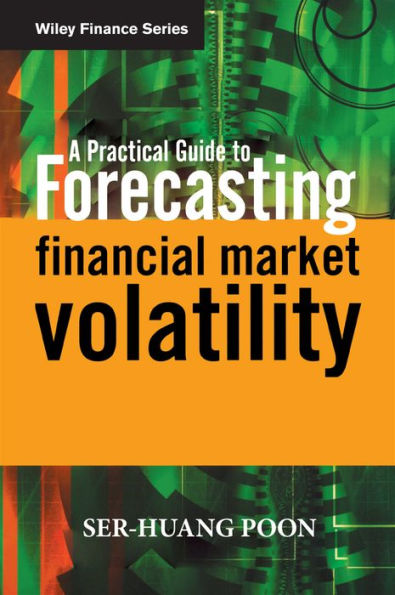Table of Contents
Foreword by Clive Granger xiii
Preface xv
1 Volatility Definition and Estimation 1
1.1 What is volatility? 1
1.2 Financial market stylized facts 3
1.3 Volatility estimation 10
1.3.1 Using squared return as a proxy for daily volatility 11
1.3.2 Using the high–low measure to proxy volatility 12
1.3.3 Realized volatility, quadratic variation and jumps 14
1.3.4 Scaling and actual volatility 16
1.4 The treatment of large numbers 17
2 Volatility Forecast Evaluation 21
2.1 The form of Xt 21
2.2 Error statistics and the form of εt 23
2.3 Comparing forecast errors of different models 24
2.3.1 Diebold and Mariano’s asymptotic test 26
2.3.2 Diebold and Mariano’s sign test 27
2.3.3 Diebold and Mariano’sWilcoxon sign-rank test 27
2.3.4 Serially correlated loss differentials 28
2.4 Regression-based forecast efficiency and orthogonality test 28
2.5 Other issues in forecast evaluation 30
3 Historical Volatility Models 31
3.1 Modelling issues 31
3.2 Types of historical volatility models 32
3.2.1 Single-state historical volatility models 32
3.2.2 Regime switching and transition exponential smoothing 34
3.3 Forecasting performance 35
4 Arch 37
4.1 Engle (1982) 37
4.2 Generalized ARCH 38
4.3 Integrated GARCH 39
4.4 Exponential GARCH 41
4.5 Other forms of nonlinearity 41
4.6 Forecasting performance 43
5 Linear and Nonlinear Long Memory Models 45
5.1 What is long memory in volatility? 45
5.2 Evidence and impact of volatility long memory 46
5.3 Fractionally integrated model 50
5.3.1 FIGARCH 51
5.3.2 FIEGARCH 52
5.3.3 The positive drift in fractional integrated series 52
5.3.4 Forecasting performance 53
5.4 Competing models for volatility long memory 54
5.4.1 Breaks 54
5.4.2 Components model 55
5.4.3 Regime-switching model 57
5.4.4 Forecasting performance 58
6 Stochastic Volatility 59
6.1 The volatility innovation 59
6.2 The MCMC approach 60
6.2.1 The volatility vector H 61
6.2.2 The parameter w 62
6.3 Forecasting performance 63
7 Multivariate Volatility Models 65
7.1 Asymmetric dynamic covariance model 65
7.2 A bivariate example 67
7.3 Applications 68
8 Black–Scholes 71
8.1 The Black–Scholes formula 71
8.1.1 The Black–Scholes assumptions 72
8.1.2 Black–Scholes implied volatility 73
8.1.3 Black–Scholes implied volatility smile 74
8.1.4 Explanations for the ‘smile’ 75
8.2 Black–Scholes and no-arbitrage pricing 77
8.2.1 The stock price dynamics 77
8.2.2 The Black–Scholes partial differential equation 77
8.2.3 Solving the partial differential equation 79
8.3 Binomial method 80
8.3.1 Matching volatility with u and d 83
8.3.2 A two-step binomial tree and American-style options 85
8.4 Testing option pricing model in practice 86
8.5 Dividend and early exercise premium 88
8.5.1 Known and finite dividends 88
8.5.2 Dividend yield method 88
8.5.3 Barone-Adesi and Whaley quadratic approximation 89
8.6 Measurement errors and bias 90
8.6.1 Investor risk preference 91
8.7 Appendix: Implementing Barone-Adesi and Whaley’s efficient algorithm 92
9 Option Pricing with Stochastic Volatility 97
9.1 The Heston stochastic volatility option pricing model 98
9.2 Heston price and Black–Scholes implied 99
9.3 Model assessment 102
9.3.1 Zero correlation 103
9.3.2 Nonzero correlation 103
9.4 Volatility forecast using the Heston model 105
9.5 Appendix: The market price of volatility risk 107
9.5.1 Ito’s lemma for two stochastic variables 107
9.5.2 The case of stochastic volatility 107
9.5.3 Constructing the risk-free strategy 108
9.5.4 Correlated processes 110
9.5.5 The market price of risk 111
10 Option Forecasting Power 115
10.1 Using option implied standard deviation to forecast volatility 115
10.2 At-the-money or weighted implied? 116
10.3 Implied biasedness 117
10.4 Volatility risk premium 119
11 Volatility Forecasting Records 121
11.1 Which volatility forecasting model? 121
11.2 Getting the right conditional variance and forecast with the ‘wrong’ models 123
11.3 Predictability across different assets 124
11.3.1 Individual stocks 124
11.3.2 Stock market index 125
11.3.3 Exchange rate 126
11.3.4 Other assets 127
12 Volatility Models in Risk Management 129
12.1 Basel Committee and Basel Accords I & II 129
12.2 VaR and backtest 131
12.2.1 VaR 131
12.2.2 Backtest 132
12.2.3 The three-zone approach to backtest evaluation 133
12.3 Extreme value theory and VaR estimation 135
12.3.1 The model 136
12.3.2 10-day VaR 137
12.3.3 Multivariate analysis 138
12.4 Evaluation of VaR models 139
13 VIX and Recent Changes in VIX 143
13.1 New definition for VIX 143
13.2 What is the VXO? 144
13.3 Reason for the change 146
14 Where Next? 147
Appendix 149
References 201
Index 215




